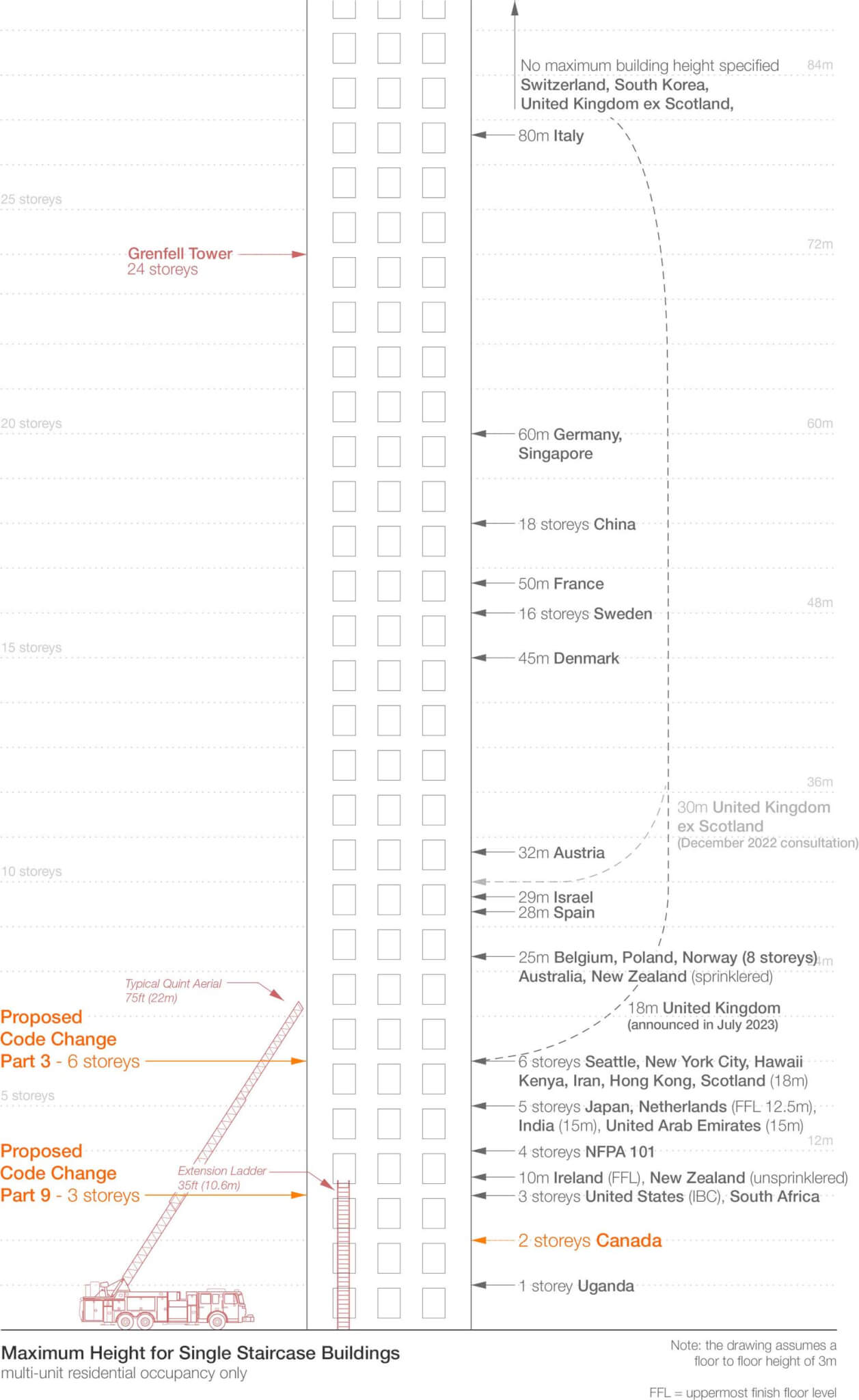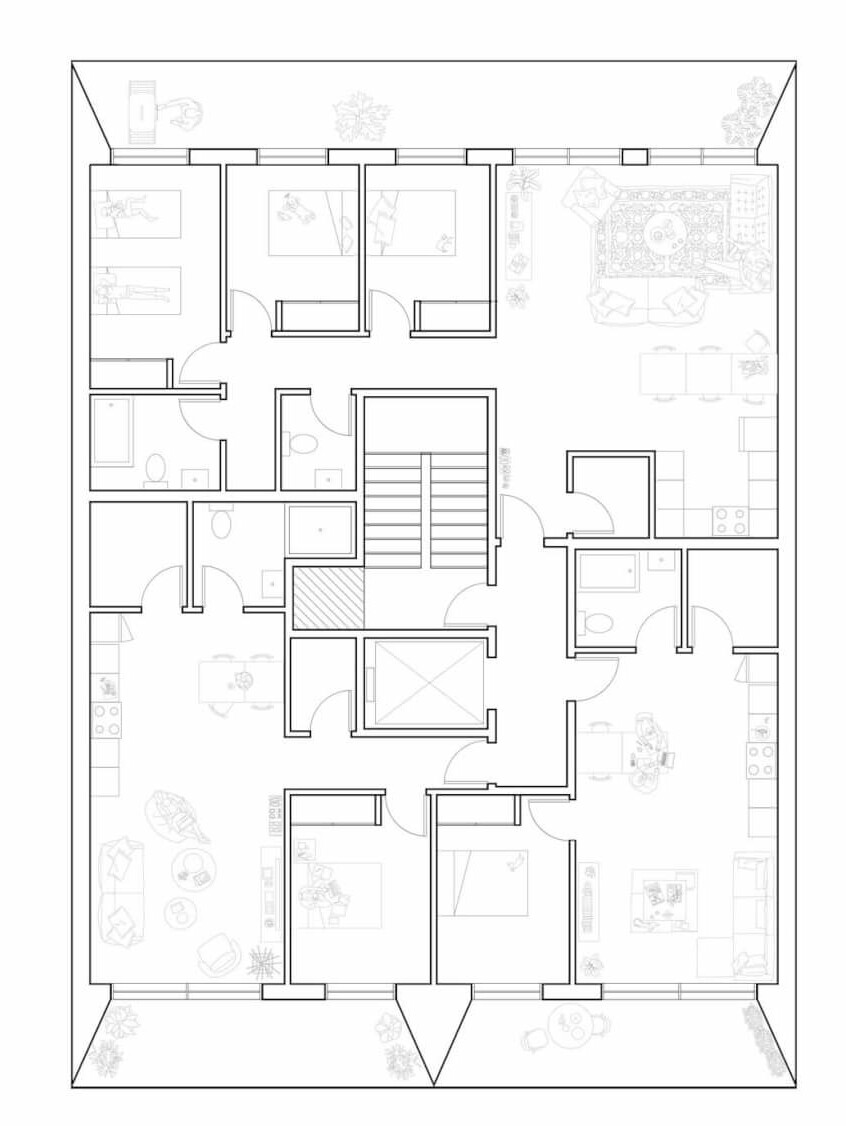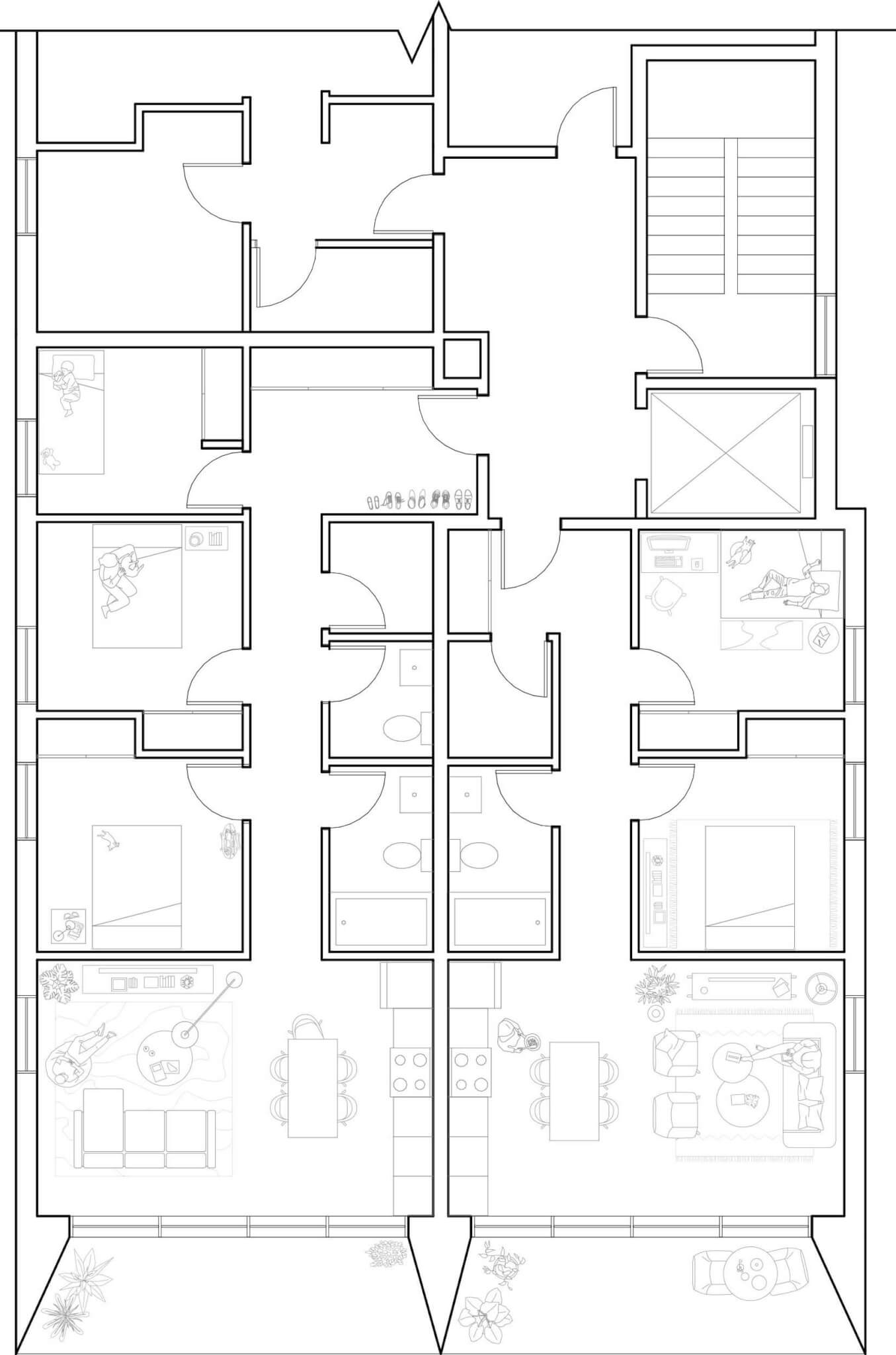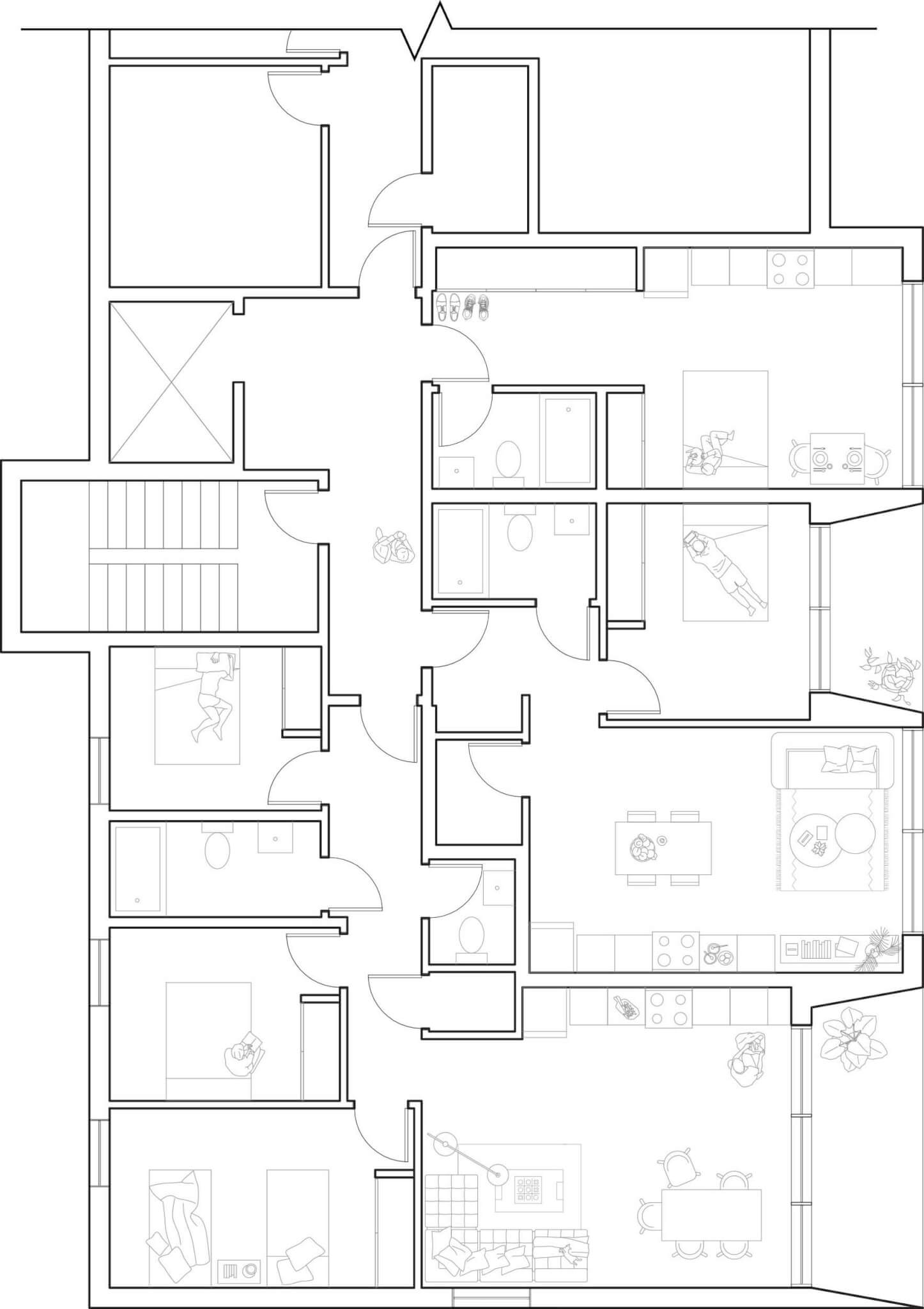In the quest to address the ever-pressing urban housing crisis, cities across Canada, particularly Metro Vancouver, face a multitude of challenges. Key among these is the “missing middle,” a term highlighting the gap in affordable housing options for middle-income families in densely populated areas. As cities grapple with housing affordability, limited housing options, and the scarcity of developable land, a transformative approach to urban development is urgently needed. This article delves into a pivotal study exploring the potential for single-stair access in multi-unit residential buildings that offer viable solutions to these challenges.
A promising approach to housing innovation lies in a careful review of building code. The standard requirement of Canadian National Building Code is for two staircases in residential buildings higher than two stories. While seemingly insignificant, this small piece of code has had a great effect on the quality of life in our cities. It tends to produce large buildings bisected by long, windowless corridors. The majority of apartments in these buildings have windows on just one side. Limited windows, then, lead to more studio and one-bedroom apartments and thus, a limited supply of family-friendly apartments.

Double staircase requirements were created to protect against the threat of fire, common in the late 19th and early 20th centuries in North America. This was also an era when timber frame construction was common. Today, however, with robust fire code—alarms, sprinklers, sophisticated fire departments—and a need to densify, the double stair requirement may no longer best serve the public.
The Single Stair Residential study, initiated by Public Architecture, was commissioned by BC Housing and the City of Vancouver. We were supported by various architectural and engineering experts, and our study presents a compelling case for rethinking the double stair requirement. At the heart of the issue is the desire to optimize the use of urban space while ensuring safety and promoting the development of more inclusive, vibrant neighborhoods. The study proposes amendments to the National Building Code, allowing for single-egress up to six stories. Such a move would not only expand the housing market by introducing a broader spectrum of housing types but also enhance affordability and accessibility.

These proposed changes—and the resulting new building types—carry profound implications for housing associations and developers, particularly those working with constrained budgets. By enabling the construction of efficient, multi-unit residential within a limited footprint, these amendments could lead to more economical construction projects, especially for smaller-scale, local developers. This is vital in fostering affordable housing solutions for diverse residents—different income groups, cultural backgrounds, and lifestyles—which contributes to the creation of more inclusive and vibrant neighborhoods and enriches the social fabric of cities. The potential for increased density without compromising safety and livability offers a promising avenue to meet the growing demand for housing in urban centers like Vancouver.

Through a comparative study of typical Metro Vancouver scenarios—a 50-foot lot; two 33-foot lots; and a group of five 33-foot lots—the report illustrates the transformative potential of single-stair access. Different apartment building typologies, including the double-loaded corridor, single-loaded corridor, point tower, and point-access block, are evaluated in terms of circulation, fire safety, and livability. The findings underscore the efficiency and community benefits of the single-stair typology, particularly for smaller sites and in addressing the missing middle. For instance, the point-access block, characterized by its spatial efficiency and potential for creating high-quality urban housing, is highlighted as a particularly promising model. With common spaces that occupy as little as 6 percent of the floor area, this typology maximizes saleable/rentable floor space without compromising design quality.
Additionally, social resiliency is baked into the design. Having a single stair increases the likelihood of running into neighbors, and clustering units creates a micro-neighborhood on every floor. The single-stair model offers significant design flexibility, allowing for larger apartments and dual-aspect units that enhance daylight access and natural ventilation. Further, point-access blocks are scalable and therefore suited to incremental development.



The study’s recommendations extend beyond theoretical exploration, advocating for the implementation of demonstration projects to showcase the practicality and benefits of single-stair access buildings. These projects could serve as tangible examples of how building code reform could unlock new possibilities for urban housing development, paving the way for more sustainable, inclusive, and vibrant urban communities. Demonstrating leadership on this front, the Province of British Columbia’s Ministry of Housing issued a call at the beginning of 2024 for teams to review and explore single-stair-egress typologies, assessing technical design considerations for implementation, as well as, possibly, recommendations for single-egress stair building design up to eight stories in height.
The proposed building code changes represent a crucial step toward addressing the challenges of housing scarcity, affordability, and diversity in urban areas. Cities have the opportunity to embrace a more flexible, efficient, and inclusive approach to urban development. As stakeholders across the housing spectrum rally in support of these reforms, the vision for a transformed urban landscape, where affordable and diverse housing options are within reach for all, moves closer to reality.
Jamie Harte is a senior associate at Public Architecture.

